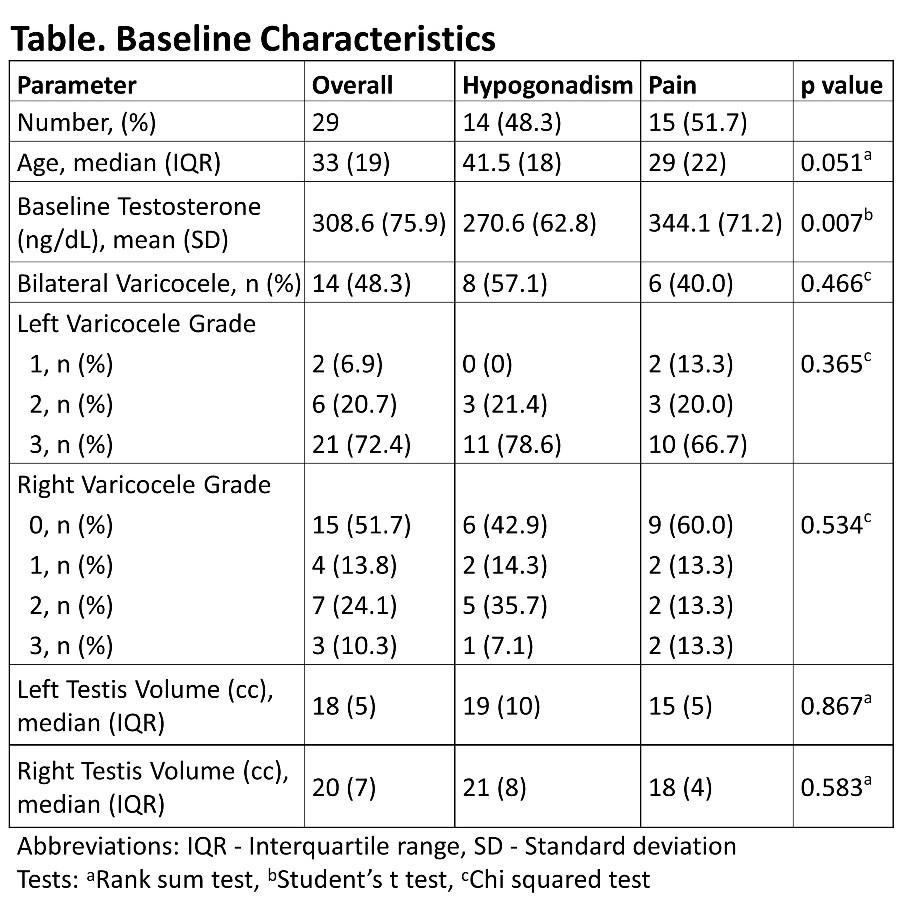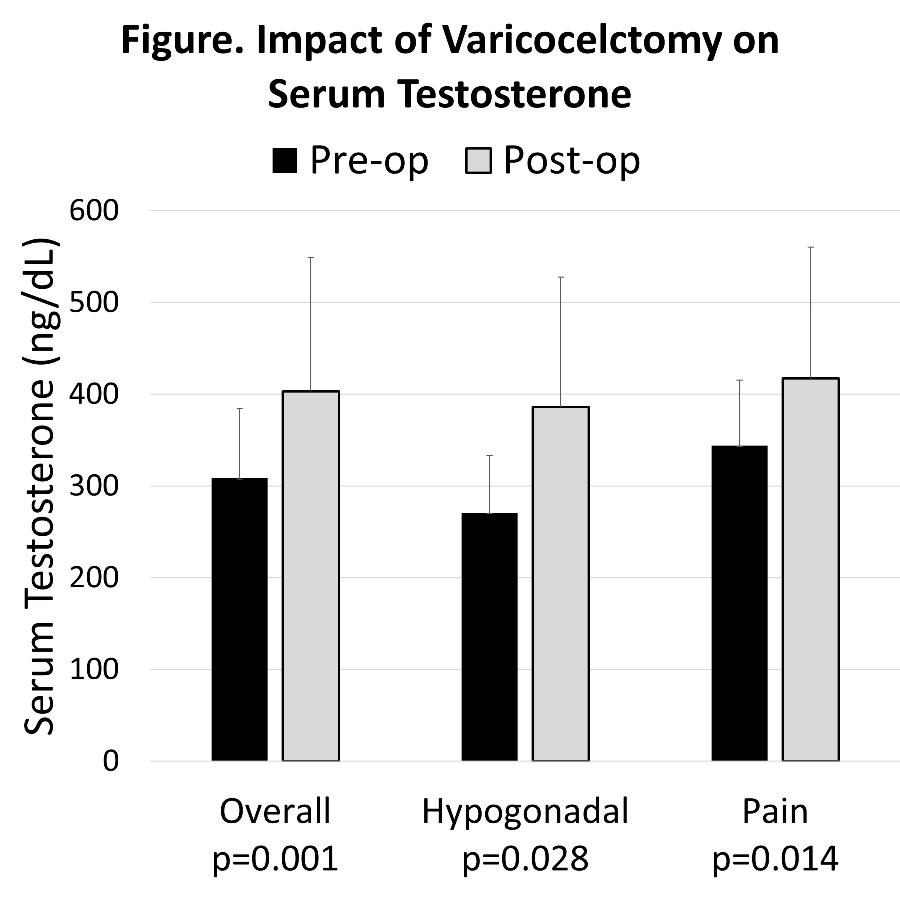MP81-04: Improvements in Serum Testosterone after Varicocelectomy in Men without Infertility
Bobby Najari*, Michael Schulster, Phil Bach, Filipe Tenorio Lira Neto, James Kashanian, Marc Goldstein, New York, NY
Introduction and Objectives
Varicocele, or abnormal dilation of the testicular pampiniform venous plexus, can impair testicular function, resulting in infertility, hypogonadism, and pain. Reports on the effect of varicocelectomy on serum testosterone have largely focused on infertile men. We hypothesized that varicoceletomy would similarly increase serum testosterone in men presenting with varicocele and symptoms of hypogonadism, as opposed to infertility.
Methods
We performed a retrospective review of 1,747 patients undergoing microsurgical varicocelectomy by a single surgeon. Inclusion criteria included a clinical varicocele, symptoms of hypogonadism at presentation, morning serum testosterone available before and after surgery, and naive to hormone therapy. We excluded men with symptomatic hypogonadism who presented with infertility. The primary outcome was change in serum total testosterone. We also compared men who presented with hypogonadal symptoms only to men who presented with testicular discomfort as well as hypogonadal symptoms.
Results
Twenty-nine men met inclusion criteria, 14 (48%) of whom presented with symptoms of hypogonadism alone (Table). Median follow-up was 5 months (range 1-28). Men who presented with symptoms of hypogonadism alone had a lower baseline serum total testosterone compared to the men with pain (271 ±63 vs 344 ±71 ng/dL, p<0.007). There were no other differences at baseline between the two groups, including length of follow-up. Half of all men had bilateral varicoceles, and 72% had grade 3 varicoceles. Microsurgical varicocelectomy significantly improved serum testosterone by an average of 93.6 ±115.2 ng/dL in the overall group, 115.6 ±116.7 ng/dL in the hypogonadal group, and 73.0 ±113.9 ng/dL in the pain group (Figure). There was no difference in the amount of testosterone improvement between the two groups (p=0.329).
Conclusions
Microsurgical varicocelectomy significantly improves serum testosterone in non-infertile men with testosterone deficiency, regardless of the presence of pain.


Date & Time: May 9, 2016 3:30 PM-5:30 PM
Session Title: Sexual Function/Dysfunction: Penis/Testis/Urethra: Benign Disease & Malignant Disease II
Sources of Funding: This project was supported by grant number T32HS00066 from the Agency for Healthcare Research and Quality. The content is solely the responsibility of the authors and does not necessarily represent the official views of the Agency for Healthcare Research and Quality. The project was also supported by The Frederick J. and Theresa Dow Wallace Fund of the New York Community Trust.
- Selected Publication & Abstract

